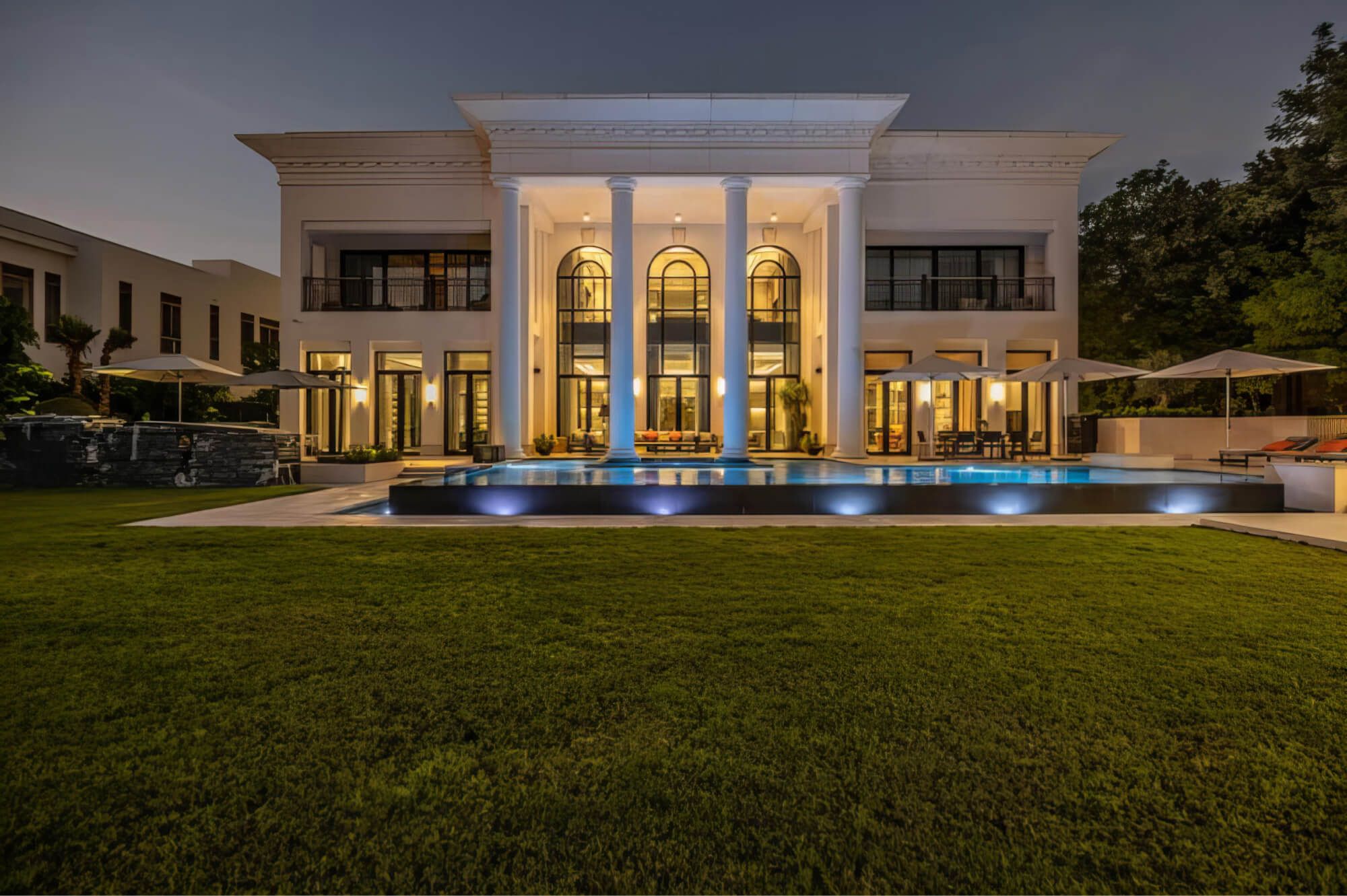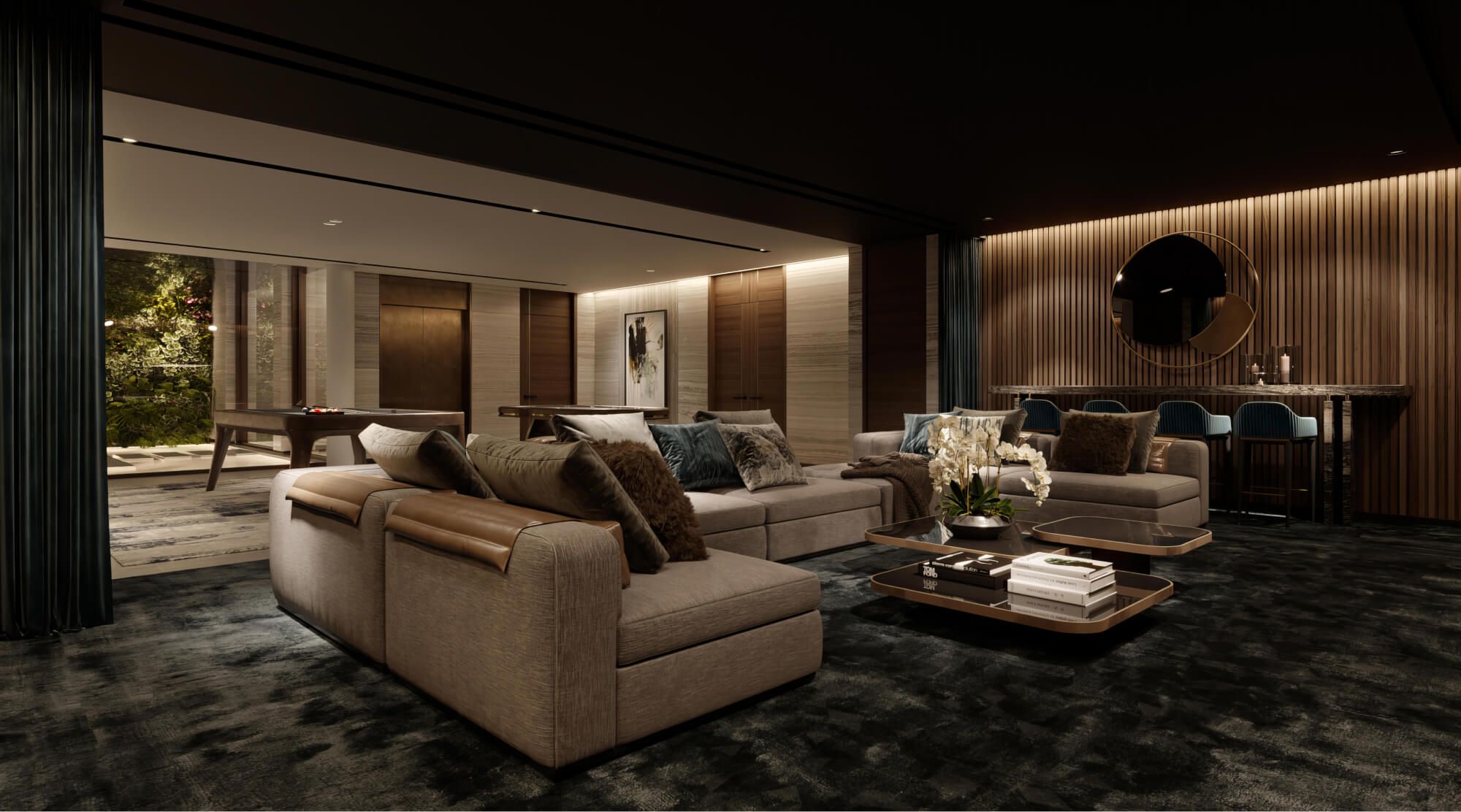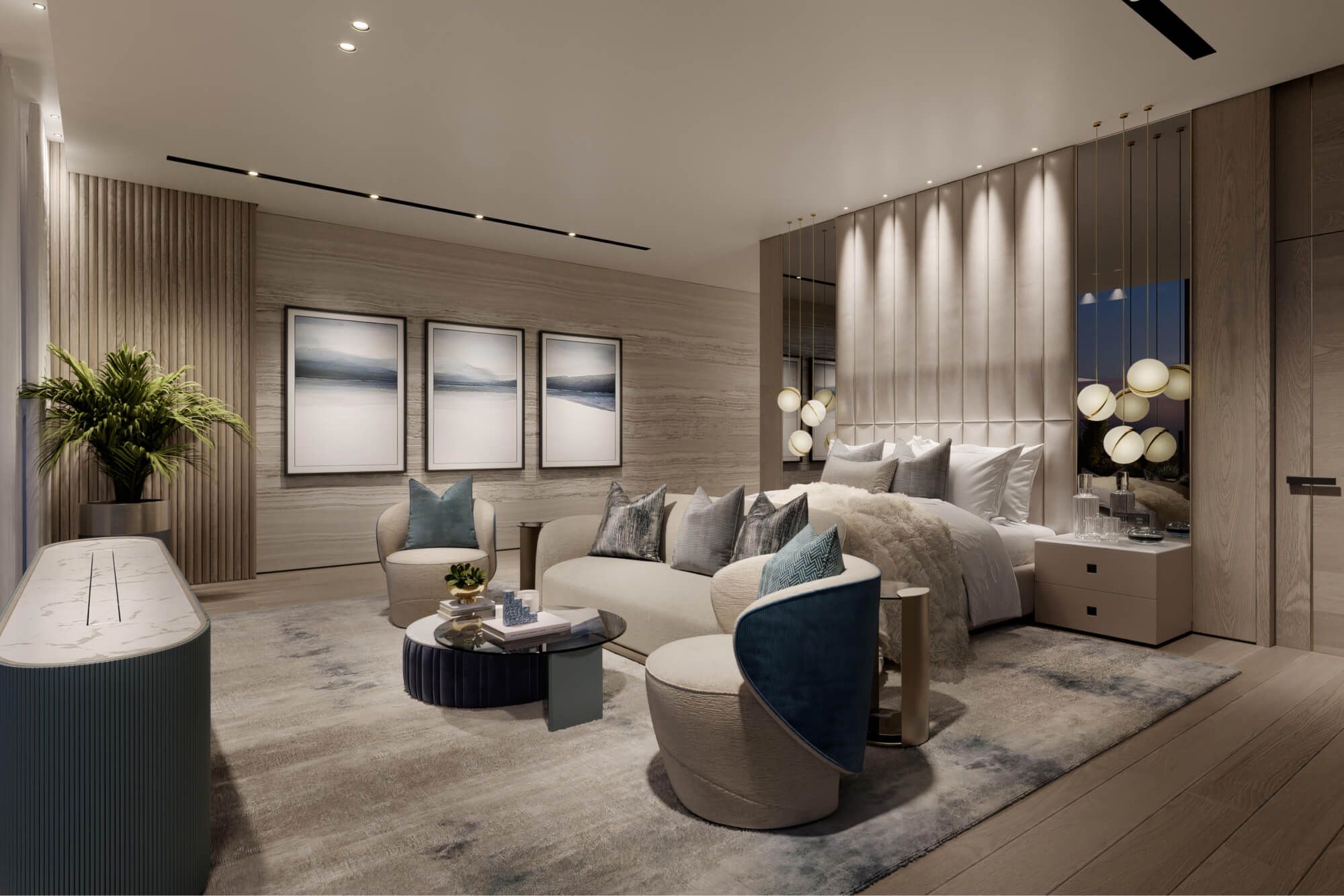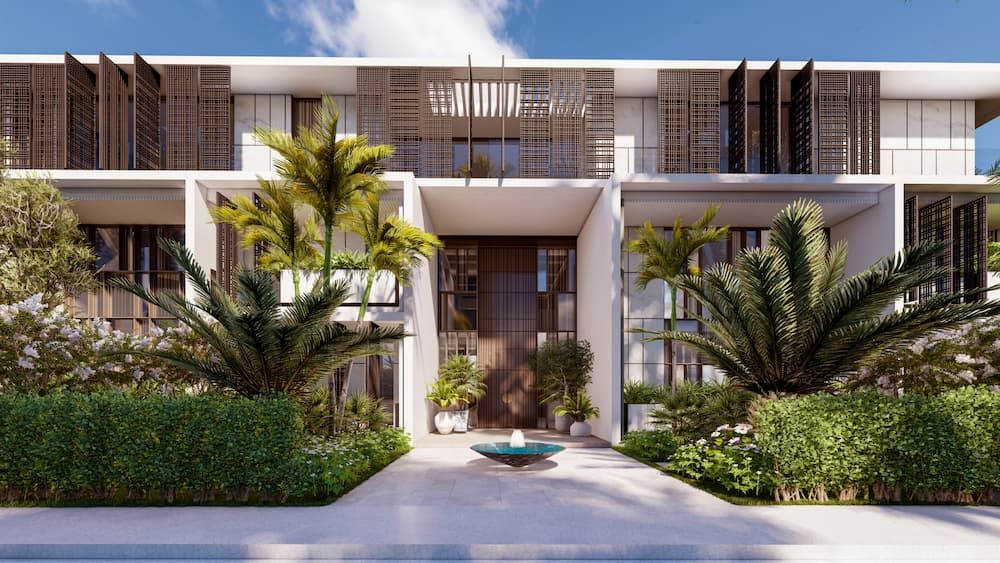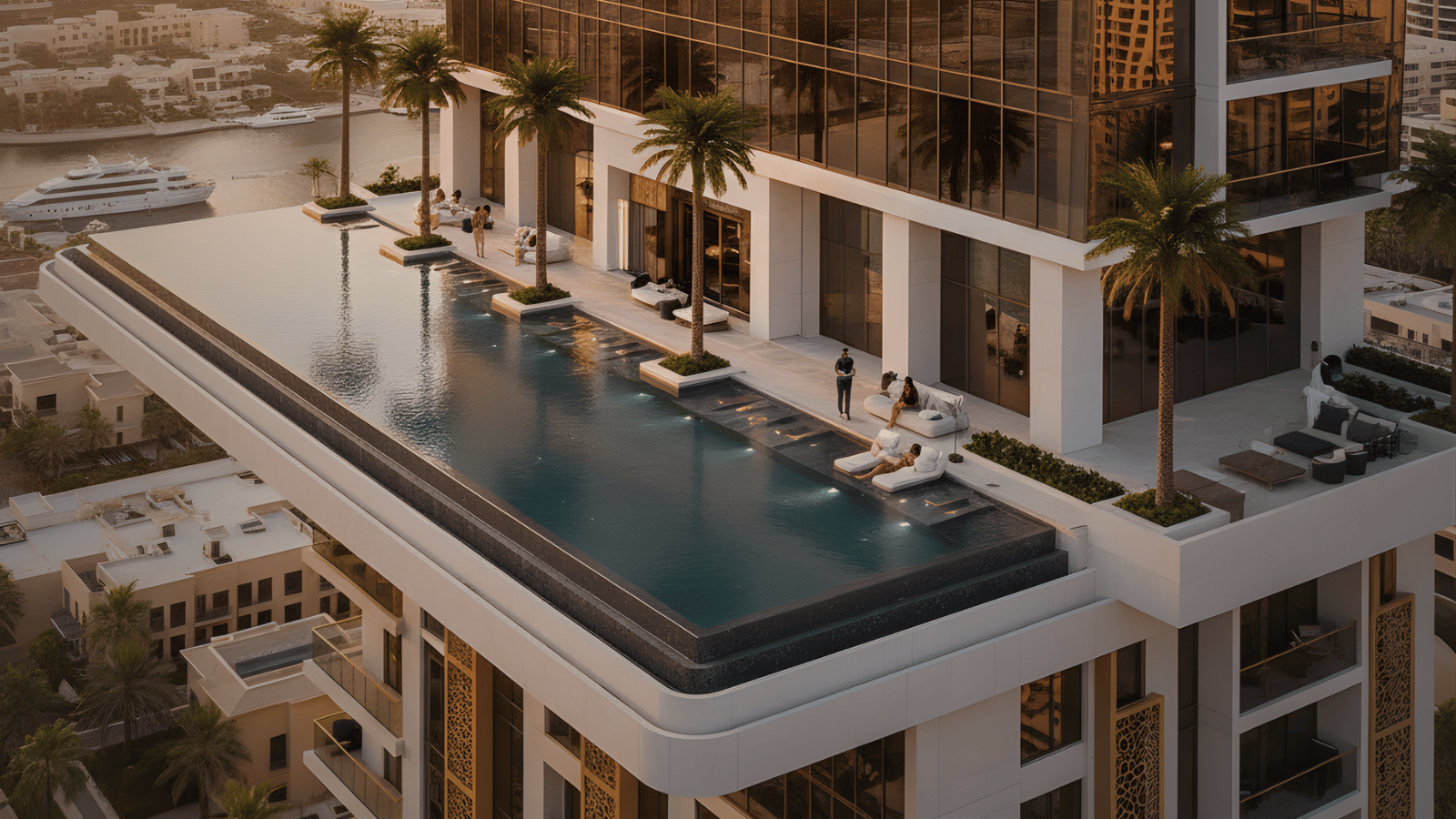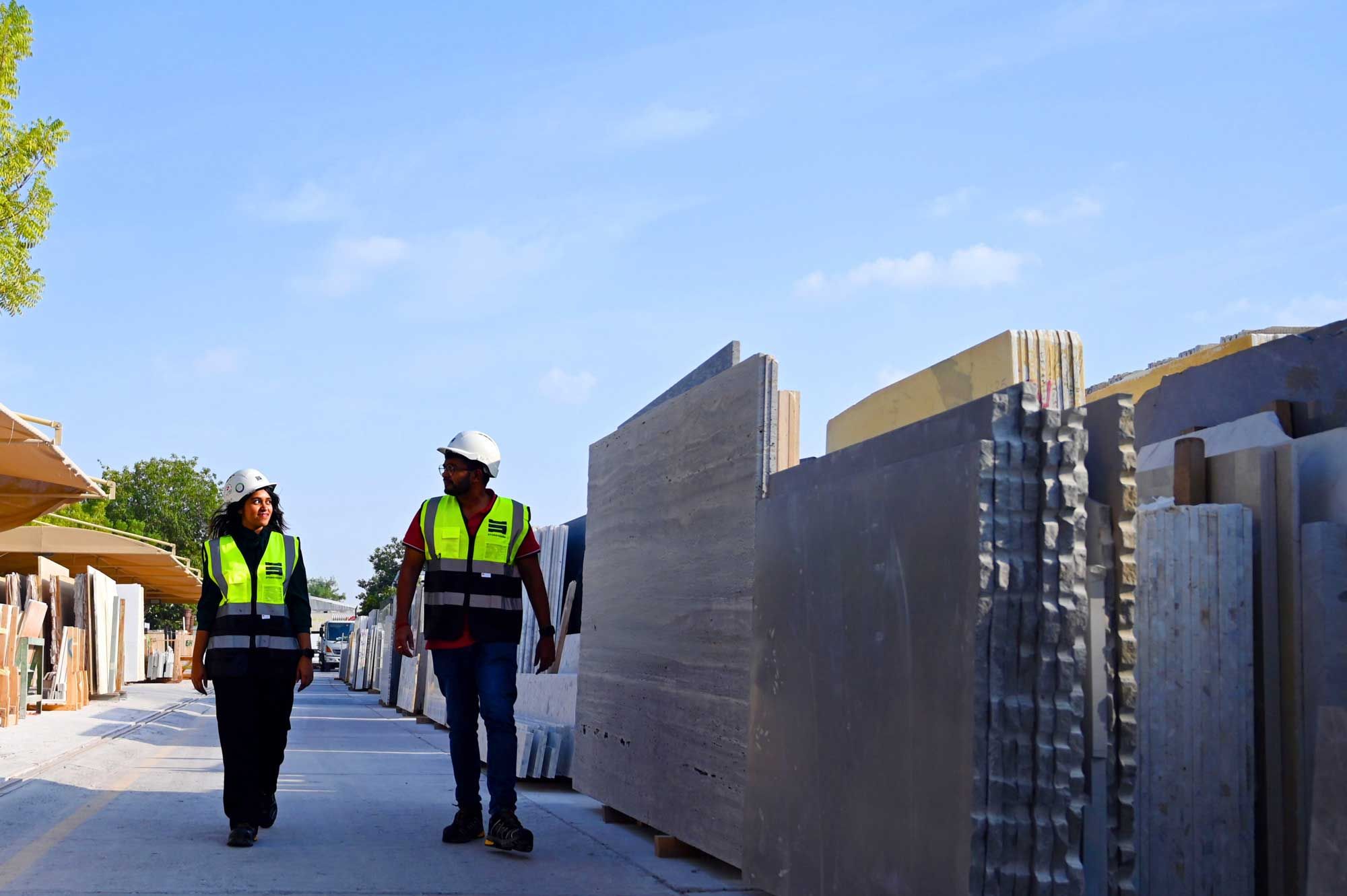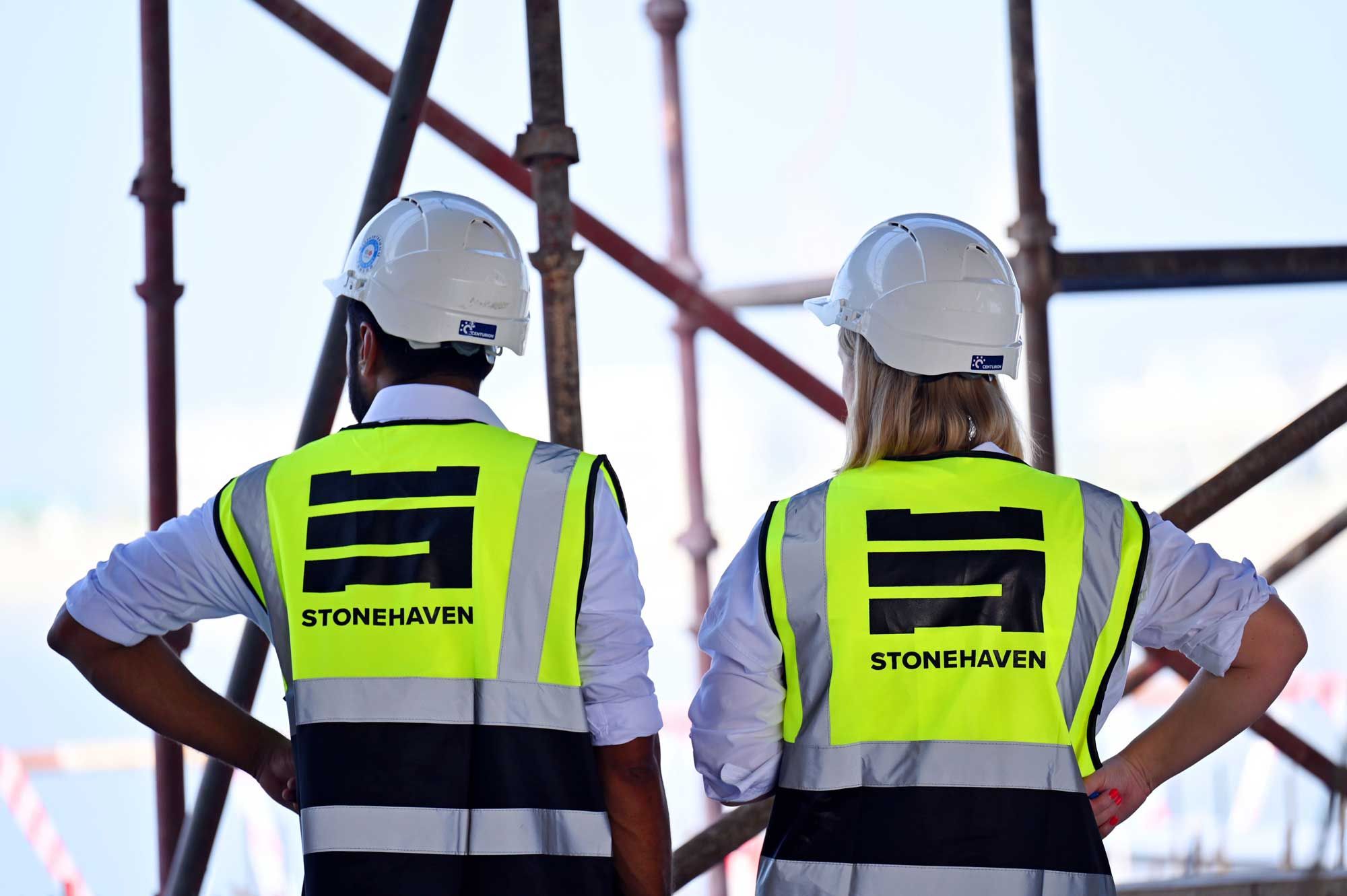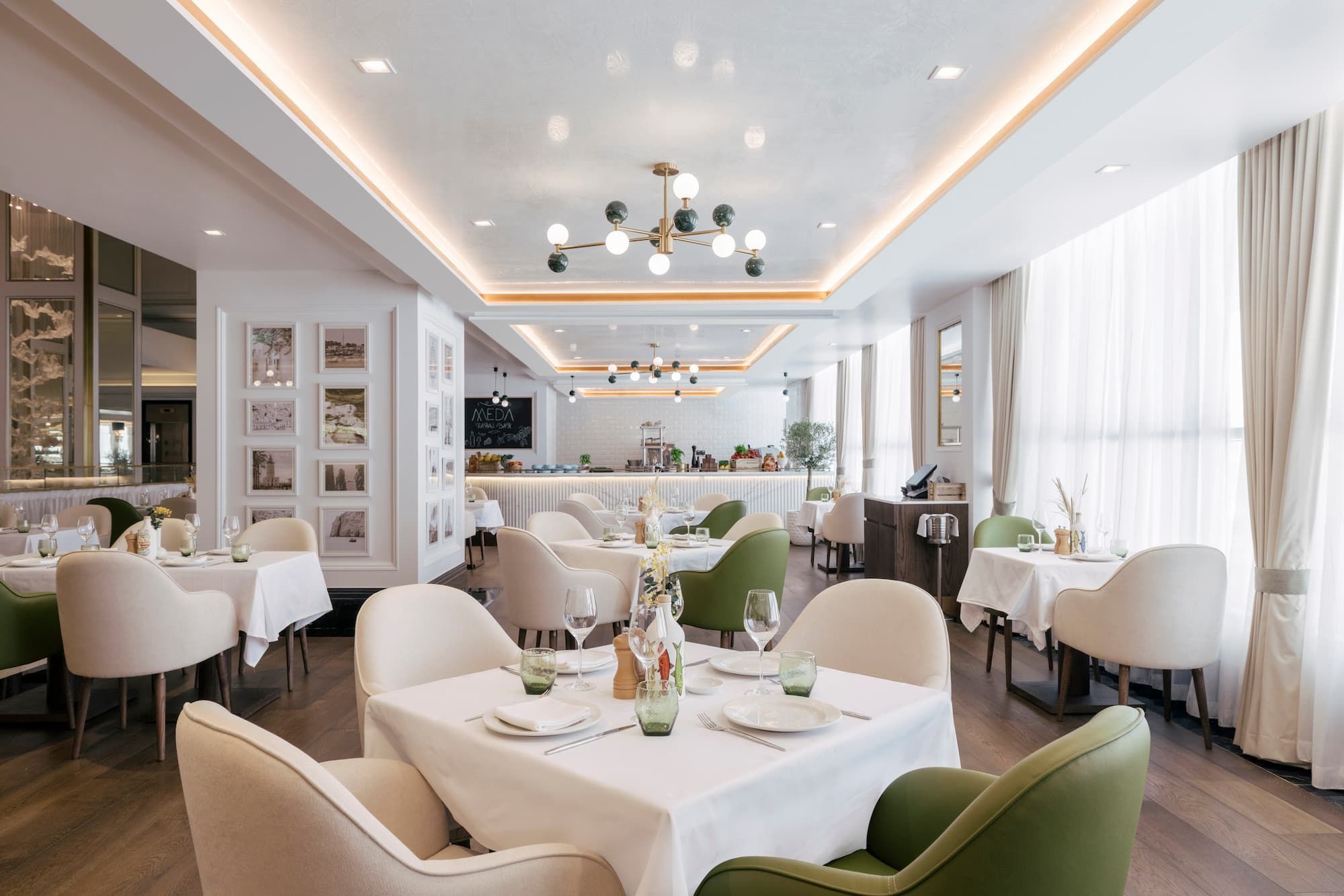The luxury real estate market has always been at the forefront of innovation, adapting faster than most sectors to shifts in buyer behaviour, technology, and lifestyle trends. As we step into 2025, marketing strategies are being reshaped by digital-first expectations, a new generation of buyers, and the demand for eco-conscious, more innovative living spaces.
For estate agents, developers, and marketers, keeping pace with these shifts is no longer optional; it’s essential.
At the heart of this transformation lies technology. From generative AI driving personalised marketing to CRM software optimising lead nurturing, digital tools are enabling agencies to engage with high-net-worth buyers in more intelligent and effective ways. Meanwhile, a mobile-first approach, underpinned by responsive web design, mobile-friendly design, and compliance with core web vitals, ensures that properties remain discoverable in an increasingly competitive search landscape.
Finally, no discussion of real estate in 2026 is complete without acknowledging the rise of sustainability and greener construction. With smart home technology and eco-friendly innovations becoming central to buyer decisions, the industry is seeing its most significant shift yet. At the same time, blockchain, tokenised real estate, and fractional ownership are reimagining investment models, making luxury property more accessible to global audiences.
Let’s look at the trends shaping the luxury property market ahead of 2026.
What Are The Top 3 Trends in the Real Estate Marketing Industry?
Trend 1: First Impressions Happen on Mobile
Is your mobile site helping you sell homes or driving buyers away?
Imagine a potential buyer scrolling through luxury property listings on their phone. If your site takes longer than three seconds to load, there’s a good chance they’ll leave and move on to a competitor.
In fact, research shows that over 50% of mobile users abandon websites that load slowly, while nearly 80% are more likely to revisit a mobile site that is fast and easy to use.
In luxury real estate, your website is more than just a digital brochure; it’s the first impression of your brand. A poorly optimised site can undermine even the most exclusive properties, while a professional, well-performing mobile experience builds trust and encourages buyers to share your listings. This is why mobile-friendly design has become a cornerstone of luxury real estate marketing in 2025.
To meet buyer expectations and keep ahead in search rankings, developers and agents must focus on three critical areas:
Core Web Vitals (CWVs) – Setting the Standard for User Experience
Google’s Core Web Vitals are the technical backbone of a strong mobile site. They ensure your site is not only visually appealing but also functional and reliable. The three pillars are:
● Largest Contentful Paint (LCP): This measures how long it takes for the most essential part of your page, often the main property image or headline, to load. For a luxury listing, that hero image of a beachfront villa should appear within 2.5 seconds. Anything longer risks losing attention.
● Interaction to Next Paint (INP): This tracks how quickly your site responds to taps, clicks, or swipes. Imagine a buyer clicking to view a property gallery; if the images take too long to respond, the experience feels clunky. Ideally, this should occur within 200 milliseconds.
● Cumulative Layout Shift (CLS): This ensures stability as the page loads. Nothing ruins the effect of a carefully curated luxury page faster than buttons or images shifting around while someone scrolls. A stable layout communicates professionalism.
When these elements are in harmony, buyers experience a site that feels smooth, trustworthy, and worthy of the properties it represents.
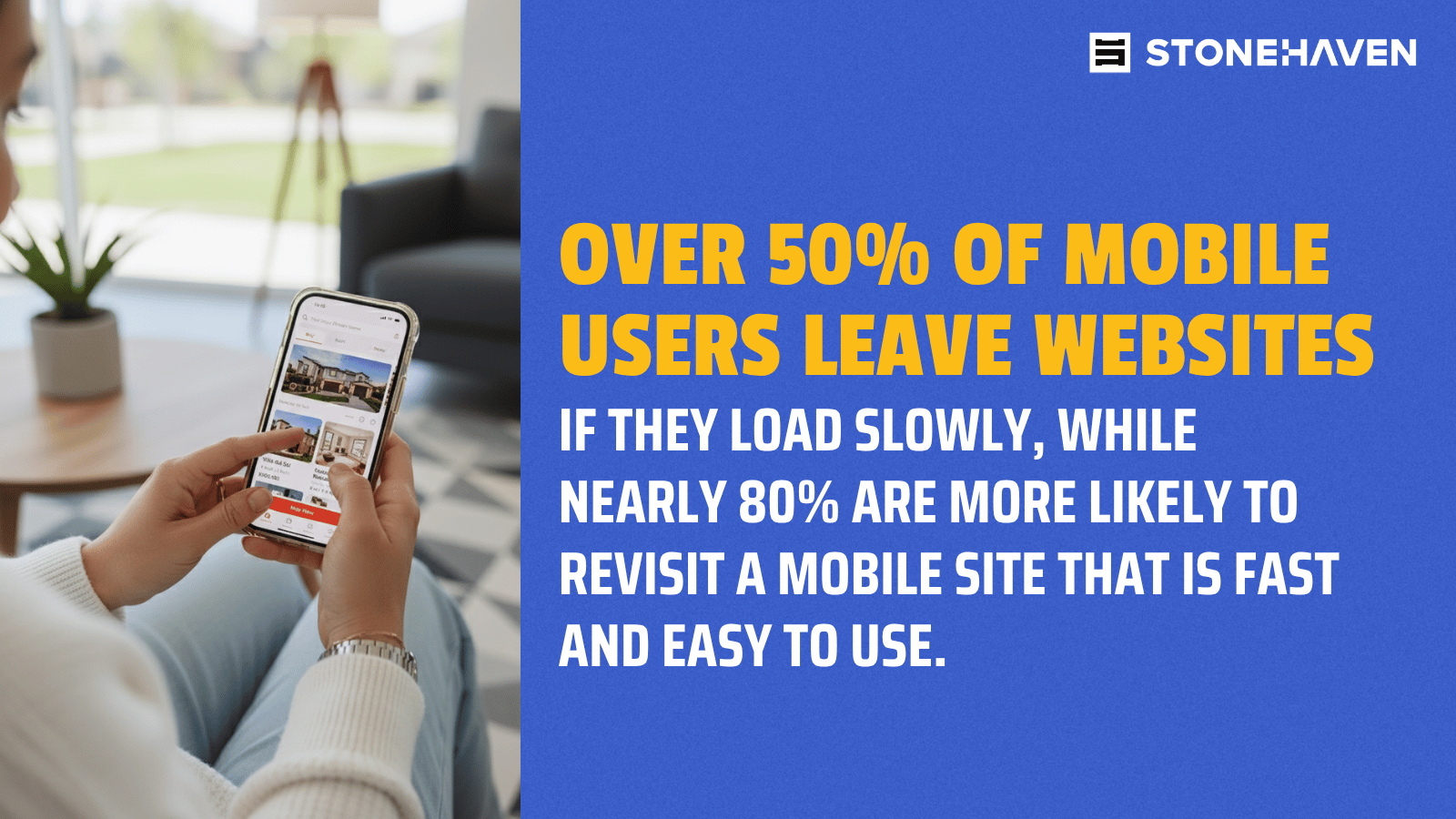
Mobile-First Indexing – Your Rankings Depend on It
Google now ranks websites based primarily on their mobile versions. This means that if your desktop site is polished but your mobile site is neglected, your search visibility will suffer. For luxury property marketers, this is a wake-up call: success in search results depends on optimising for smartphones first.
Think of it as presenting property blueprints. A full-size set may look impressive, but in reality, it’s the portable, scaled-down version that gets shown and shared most often. Mobile-first indexing works the same way. It prioritises what’s practical and accessible to buyers on the go. For agencies, this means that ensuring your mobile site is fully optimised isn’t optional. It’s the gateway to being discovered by high-intent buyers in competitive markets.
Responsive Web Design (RWD) – Consistency Across Every Screen
Today’s buyers switch effortlessly between devices. They may first spot a listing on their phone, revisit it on a tablet, and later dive deeper on a laptop. Without responsive web design, your site risks appearing disjointed, with distorted layouts or broken features depending on the device.
Responsive web design ensures that the same content i.e., property details, videos, photography, and branding adapts beautifully to any screen size. It uses the same HTML and URL across devices, avoiding duplicate content issues that can harm SEO evolution. More importantly, it maintains branding consistency, so whether a buyer is scrolling through video content on a mobile device or exploring detailed specs on a desktop, the experience feels seamless and premium.
For luxury real estate, where presentation is everything, this adaptability reinforces the property's value and the brand's professionalism.
Trend 2: AI Reshapes Personalised Marketing and Lead Nurturing
In the past, luxury real estate marketing often relied on broad campaigns, hoping the right buyer would eventually respond. Today, generative AI flips that model on its head. It enables estate agents to deliver personalised marketing that feels one-to-one rather than one-to-many. From suggesting properties that match lifestyle aspirations to crafting tailored emails that resonate with individual buyers, AI is creating warmer, more meaningful first impressions.
Intelligent CRMs: The New Personal Assistant
Modern CRM software is no longer just a digital filing cabinet. With AI built in, tools like Salesforce, Pipedrive, and Top Producer act more like smart personal assistants. They:
● Nudge you with automated reminders so no lead is left waiting.
● Organise every client interaction from viewings to contracts in one streamlined dashboard.
● Route leads intelligently, ensuring high-value clients are connected to the right agent immediately.
● Sync with MLS feeds, marketing platforms, and even segmented email campaigns for a centralised workflow.
This means less time spent on admin and more time dedicated to where agents add actual value: building trust and closing deals.
Predicting the Perfect Price Point
Pricing luxury homes has always been part art, part science. Now, AI is tipping the balance in favour of data. Predictive models analyse historic sales, market trends, and even sentiment signals to recommend valuations. Take US Zillow’s Zestimate as an example: with error rates under 2% for on-market homes, it demonstrates the accuracy AI can deliver.
For agents, offering AI-backed valuations strengthens credibility. A buyer is more likely to trust an agent who provides data-driven insights, while a seller gains confidence that their property is positioned competitively in the marketplace.
Reading Between the Lines with Sentiment Analysis
Sentiment analysis enables systems to detect signals that buyers leave behind, from watching a video tour to downloading a neighbourhood guide. If a client shows interest in smart home features or eco-friendly designs, the CRM can trigger follow-up content tailored to those exact preferences.
Always-On Engagement with Chatbots
Luxury buyers operate across time zones, and expectations for instant replies are higher than ever. Enter AI chatbots: not as clunky autoresponders but as polished, brand-aligned concierges. They answer questions, book appointments, and even suggest properties 24/7.
Human Expertise Meets Machine Precision
The future of luxury real estate marketing is not about replacing people with algorithms. It’s about blending the empathy and negotiation skills of agents with the scale and intelligence of AI. Used wisely, this balance generates high-quality leads, reduces acquisition costs, and increases conversion rates, all while maintaining the personalised touch that wealthy buyers expect.
Trend 3. Video Marketing & Virtual Engagement — Is Your Story Capturing Hearts as Well as Eyes?
In luxury real estate, buyers are looking for more than just facts. They want to experience a lifestyle, the light in a room, the sound of footsteps in a marble foyer, and the view from a terrace at sunset. That’s why video marketing and virtual engagement tools allow agents and developers to tell immersive stories, build emotional connections, and stand out in an increasingly saturated market.
Short-form clips (such as Reels or Shorts), cinematic tours, virtual tours, and live-streaming showings are reshaping how luxury properties are discovered and evaluated. Buyers, particularly Millennials and Gen Z, expect high-quality visuals, interactive content, and authenticity. Overly polished doesn't hurt, but authenticity wins.
Below are several ways video and virtual engagement are transforming luxury real estate:
Storytelling Through Video: Beyond the Property, Into the Lifestyle
Video content offers something static photos cannot: the texture of movement, the shift in light, the sound of ambience. For luxury property, lifestyle sells. Showcase sunsets, ambient sounds, the way trees move in the breeze, fleeting moments like these evoke emotion.
Short-form vertical videos, such as Reels and YouTube Shorts, are ideal for capturing attention quickly, highlighting key selling points (e.g., smart home features, eco-friendly elements, innovative architecture). Full walkthroughs, cinematic lifestyle pieces, drone shots all help prospective buyers imagine themselves living in the home, not just visiting it.
Storytelling also means consistency: your video aesthetic, tone, and narrative voice should mirror the brand’s identity. That builds trust and helps with branding consistency, which is crucial when high-net-worth clients compare options.

Virtual Tours, 3D Views & Remote Exploration
Virtual tours are expected, especially in luxury real estate. Properties with virtual tours tend to receive significantly more views and spend a longer time with prospective buyers. For example:
● Listings with virtual tours receive 87% more views than those without virtual tours. (CloudPano)
● Buyers spend around 5-10× times longer on websites featuring virtual tours versus sites with just photos and floor plans. (Exclusible)
Virtual tours help in multiple ways:
● They reach out-of-area and international buyers who may not be able to visit in person.
● They allow buyers to pre-qualify listings (narrow down before scheduling viewings), saving time for both buyer and agent.
● They help highlight unique 3D design details, craftsmanship, spatial flow, and architectural features that are key differentiators in luxury properties.
Live-Streaming & Short-Form Engagement for Instant Connection
Live-streamed open houses, Q&A sessions, and teaser tours all create a sense of urgency, leading to strong engagement. They let buyers ask questions in real-time, experience the agent's personality, and feel the authenticity of the property.
Meanwhile, short-form vertical videos and content help maintain momentum and reach younger, social media-native audiences. Clips of scenic views, smart home technology in action, or eco-friendly design features (such as solar panels and green roofs) on platforms like Instagram, TikTok, and YouTube help amplify reach. They also feed into video SEO strategies, where visual content boosts discoverability.
Analytics, Feedback & Optimisation: Measuring What Works
Video and virtual tools aren’t black boxes. Use analytics to see what engages buyers most:
● Which parts of the virtual tour do people linger on?
● Which video clips lead to enquiries?
● What thumbnails, captions, or starting scenes most effectively draw people in?
These insights support your future content, cut what doesn’t work, and invest more in what does.
Authenticity, Accessibility & Inclusivity
“Perfect” doesn’t always win. Properties that show warmth, real lighting, and even minor imperfections sometimes engage more because they feel trustworthy. Authentic content such as interviews, behind-the-scenes footage, and agent commentary helps humanise the luxury brand.
Accessibility also matters: ensure video and virtual content works well on mobile, loads quickly, is subtitled (for silent viewing), and offers navigation for users with different needs.
What Is the Fastest Growing Luxury Real Estate Market in the World?
When we talk about “fastest growing luxury real estate market,” we mean places where high-end property values are going up fast, demand from affluent buyers is rising, and luxury stock is being snapped up. These are the markets drawing global attention — not just for prestige, but for opportunity.
As we head through 2025, one city has firmly taken the lead in global luxury growth: Dubai.
Dubai’s Luxury Real Estate: What’s Fueling Its Meteoric Rise?
Sky-High Price Growth & Strong Transaction Volumes
Dubai is riding a luxury real estate boom. In 2024, capital values in prime areas were projected to increase by up to 9.9%, making Dubai one of the fastest-appreciating luxury markets globally.
Sales of ultra-luxury homes (properties worth over US$10 million) surged — the city saw 435 transactions in 2024 at that level. For context, that number is comparable to, or even exceeding, some of the world’s more established luxury property hotspots.
Meanwhile, asking prices for apartments are up too: in Q1 2025, the median asking prices in Dubai’s apartment segment rose about 12% year-on-year, and two-bedroom units saw robust growth (≈17%) as buyers seek more space.
What luxury real estate marketers should take away from this,
If you're marketing luxury properties, here are a few takeaways:
● Highlight features that affluent buyers care about: smart home technology, sustainability, green building, walkability, and views.
● Use content and tools that make a lasting impression: virtual tours, video content, live streaming, and immersive imagery.
● Emphasise trust and credibility: accurate valuations, strong branding, high-quality content.
● Think global: international buyers may be watching markets like Dubai for investment or relocation opportunities.
What are the 7Ps of Marketing in Real Estate?
The 7Ps of Marketing, initially developed as part of the extended marketing mix, remain a robust framework for the luxury real estate industry. In 2025, each element has taken on new meaning due to digital transformation, sustainability priorities, and shifting buyer demographics, including Millennials and Gen Z buyers. Here’s how the 7P’s apply in today’s property market:
1. Product – Beyond Four Walls
In real estate, the “product” is not only the property itself but the lifestyle and experience it offers. Luxury developments are increasingly incorporating co-living concepts, mixed-use properties, and eco-conscious features, such as greener construction and smart home technology. Buyers want homes that are sustainable, connected, and tailored to modern living.
2. Price – Transparent and Data Driven
Pricing strategies are more sophisticated than ever. Generative AI tools and predictive analytics are helping agents set competitive valuations, while new models such as fractional ownership and tokenised real estate are broadening access to luxury property investment. For high-net-worth clients, price transparency and accurate valuation build credibility and trust.
3. Place – Physical Location Meets Digital Presence
While location will always be paramount, in 2025, “place” also refers to where buyers discover and engage with listings. With mobile-first indexing, responsive web design, and core web vitals shaping online visibility, digital presence is just as significant as physical positioning. For international buyers, virtual tours and video content act as gateways to prime properties they can’t immediately visit.
4. Promotion – The Power of Storytelling
Promotion is no longer just glossy brochures. Today’s promotion strategies rely heavily on video marketing, short-form content like Reels and Shorts, and interactive experiences such as live-streaming property launches. Campaigns optimised for search intent, video SEO, and AI Overviews ensure luxury property listings cut through that noise. Consistent, authentic storytelling helps build a recognisable and trusted brand.
5. People – Agents as Experience Managers
Estate agents are no longer simply salespeople; they are experience managers. Using CRM software, segmented email marketing, and AI-driven lead nurturing, they can deliver highly personalised journeys for each prospect. The human element remains essential especially in luxury markets, where relationship building and trust determine long-term success.
6. Process – Streamlined and Tech-Enabled
Smooth processes are key in high-value transactions. Blockchain and smart contracts are beginning to simplify the buying and selling process, reducing time, paperwork, and associated risks. At the same time, digital workflows that integrate MLS feeds, automate follow-ups, and route leads ensure every client enjoys a seamless journey from enquiry to closing.
7. Physical Evidence – Building Trust Online
“Physical evidence” is everything a client sees that reinforces credibility. In luxury real estate, this includes not only the physical property but also the quality of your digital assets. High-definition virtual tours, polished video content, professional websites that meet mobile-first standards, and consistent branding all serve as proof of professionalism. In an industry where reputation is everything, this visible evidence can be the deciding factor for a high-net-worth buyer.
What Is the Next Change Happening in Real Estate?
Real Estate has constantly evolved alongside society’s most significant shifts, and in 2025, two forces are redefining the industry: new ownership models and sustainability.
Tokenised Real Estate and Fractional Ownership
The next big thing in real estate is the rise of tokenised real estate and fractional ownership. Enabled by blockchain and smart contracts, these models allow investors to purchase a share of a property rather than the whole asset.
This innovation lowers barriers to entry, attracts younger investors, and makes luxury properties more accessible to a global audience.
For example, a multimillion-pound villa can now be divided into digital tokens, allowing buyers from around the world to hold a stake in the property. This opens up liquidity in a market that has traditionally been illiquid, providing new opportunities for diversification. It’s also making high-value assets more transparent and secure, thanks to blockchain’s immutable records.
Sustainability and Greener Construction
At the same time, real estate is shifting toward sustainability. High-net-worth buyers are increasingly prioritising eco-friendly materials, greener construction, and homes equipped with smart home technology to reduce energy use. Developers are responding by integrating solar panels, rainwater harvesting, low-carbon materials, and wellness-focused amenities into new builds.
Regulations and incentives worldwide are prompting developers to meet higher environmental standards, while affluent buyers are seeking properties that align with their values. In luxury markets especially, a sustainability-first approach is fast becoming a competitive differentiator.
The Intersection of Tech and Lifestyle
Together, these shifts reflect a bigger truth: real estate is no longer just about location and square footage. It’s about flexibility, transparency, and responsible living. The adoption of tokenisation, fractional ownership, and blockchain makes investing easier and safer. Meanwhile, the prioritisation of eco-friendly design and sustainable building practices ensures that properties meet the expectations of modern buyers who want to live and invest more responsibly.
For marketers, this means highlighting both the lifestyle and the values that properties embody. It’s not enough to showcase luxury finishes; you must also tell the story of efficiency, community impact, and innovative ownership.
Final Takeaway: Make 2025 Your Year of Growth with Stonehaven
Luxury buyers are no longer waiting for brochures or billboards. They’re searching online, scrolling through short-form videos, exploring virtual tours, and expecting seamless mobile-first websites that deliver instant answers. If your brand isn’t visible in those spaces, you’re invisible to the people who matter most.
That’s where Stonehaven comes in. We help developers and agencies strengthen their digital presence with strategies that work from AI-driven personalised marketing and segmented email campaigns to local SEO that puts your projects on the map. Our expertise ensures that every stage of the buyer journey is covered, from the first click to the final contract.
In 2025, success in luxury real estate will belong to those who adapt quickly, embrace innovation, and deliver authentic experiences online.
Partner with Stonehaven today to amplify your visibility, nurture high-value leads, and convert attention into lasting sales.

